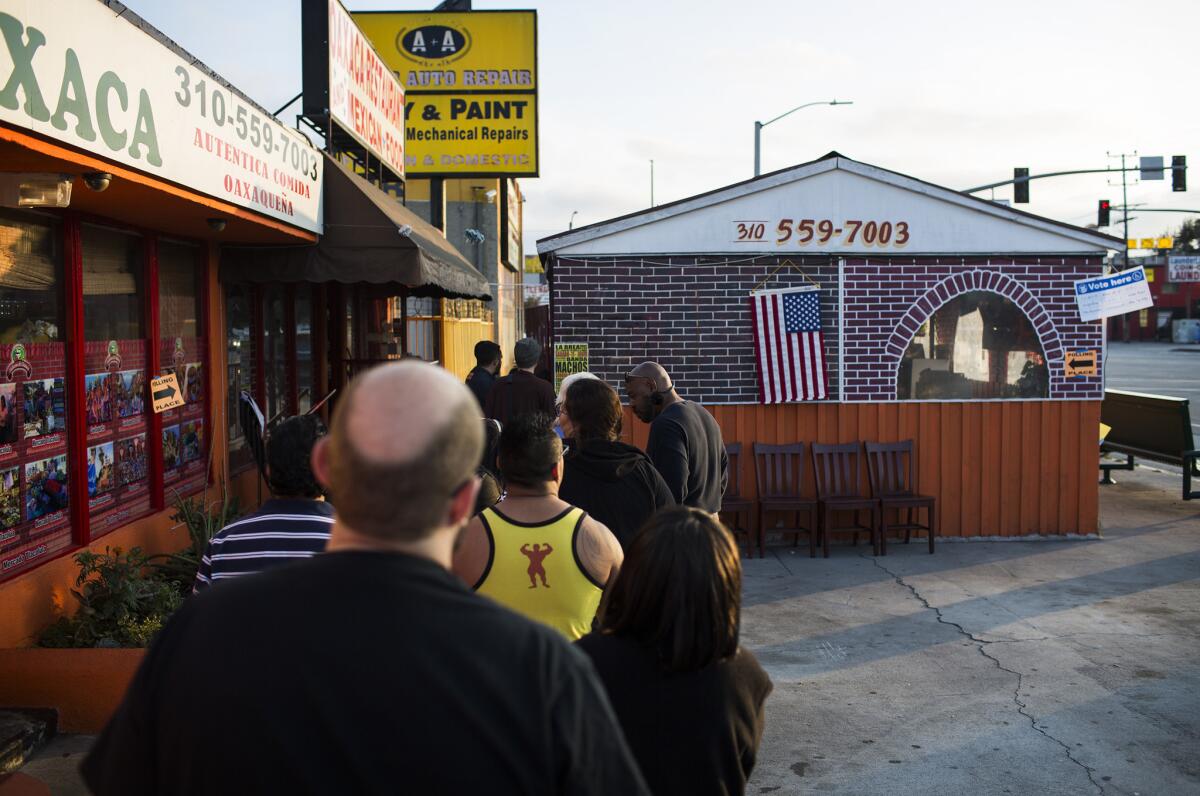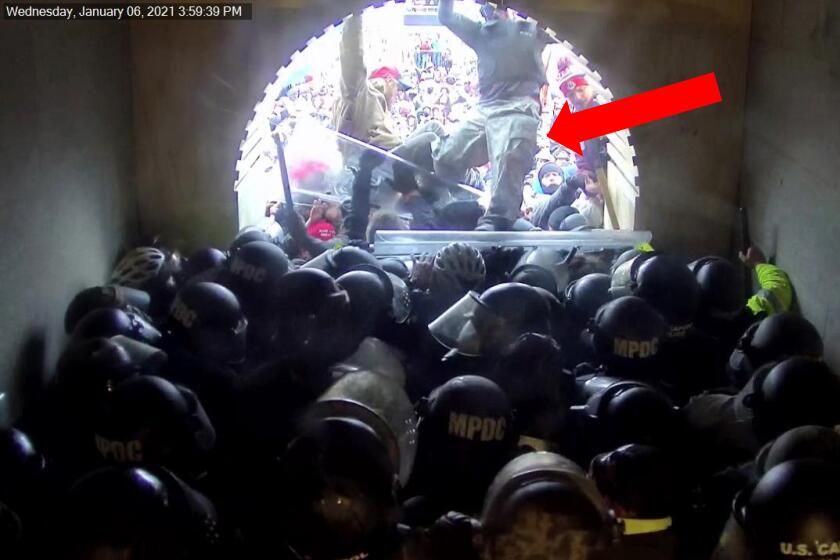Analysis: It only took a month to count California’s votes. Here’s why, and why it may get better

- Share via
Well, that’s a relief.
For the last four weeks, Californians have ceased to be those goofy people on the left coast. For the last four weeks, we have been the people who can’t count.
And now the votes from the June 7 primary, more than 8.5 million of them, have been counted; they are due to be certified by Secretary of State Alex Padilla on Friday.
The lingering question isn’t who won the presidential primaries or the Senate race; the margins in those races, and most other regional and local contests across the state, were big enough that the winners have been known almost since primary day.
No, this was the question: What took you so long?
The answer: It’s complicated. More than voters know. But it may be about to get faster.
For voters, the most time-intensive part of balloting is deciding which candidate to like. The act of filling in the answers at a polling place or mailing it in from home doesn’t take long. But this year, several factors combined to give elections officials a giant counting headache.
Elections officials say they understand that voters have been wondering what was up. Among other things, the delay fed countless conspiracy theories, particularly on the part of Bernie Sanders voters who saw in the extended count a false hope of eking out victory over Hillary Clinton.
“I can certainly relate to the frustration of not knowing why it takes so long in California, but as an election official, if I had to choose I would err on the side of getting it right rather than getting it fast,” Padilla said. (Don’t blame him: The secretary of state’s office doesn’t count ballots; it certifies the ballots counted locally.)
The biggest complication is size. More votes were cast in California in June than there are residents of the entire state of Virginia, or in Kentucky and Oregon combined. Another issue: a state policy change that, this year, allowed ballots to be counted if they were received up to three days after the election, so long as they were postmarked by election day, the previous deadline. That added, Padilla said, hundreds of thousands of ballots to the mix.
Mail-in balloting has boomed in California because of its convenience. But those ballots have to be checked and verified, acts which take longer than simply spinning them through the counting machine. Perhaps the worst complication in June was that the usual number of election day mistakes — primarily, voters going to the wrong precinct, or not appearing on the rolls due to an error — were magnified by the boost in new voters and differing rules about presidential voting on the part of Democrats and Republicans.
In Orange County, for example, 61,000 ballots were cast provisionally, meaning the ballots suffered some sort of glitch. Four years ago, there were only about 30,000 of those ballots. And it is those ballots that are the most labor intensive of all.
Here’s the run-down, courtesy of Neal Kelley, the Orange County registrar of voters: When a provisional ballot is cast, election officials have to pull the record of the voter, searching databases to find out if, say, Joe Smith still lives in the same place in Orange County and didn’t cast a ballot elsewhere.
“Do you know how many Joe Smiths there are in Orange County? Hundreds,” said Kelley, who is president of the California Assn. of Clerks and Election Officials.
Sometimes the address is wrong, and sometimes the signature looks off, and both have to be double-checked against the original registration document. Sometimes the voter went to the wrong voting location and thus cast a ballot in races outside his home precinct, and those local races would have to be stripped from the count.
All of that, Kelley said, takes two to five minutes, minimum, and sometimes up to half an hour. In Los Angeles County alone, about a quarter-million such ballots were cast. In California? More than 700,000.
Voters, Kelley said, “don’t have a concept of that. It’s like me trying to explain to you how to build a jet engine over Twitter.”
As frustration has built, a solution for much of the mess has been winding its way through the Legislature. Senate Bill 450 would radically re-make the act of voting in California.
Californians would have the option of voting by mail or showing up over a 10-day period at a voting center. Voting centers would not be as ubiquitous as the corner coffee place, but they would be sited regularly enough that a voter can stop into one near home, school, work or grocery store, so long as it’s in the same county.
The voting centers would check eligibility before the ballot is cast using a statewide database currently unavailable. Because voting could be done anywhere, the biggest single reason for provisional ballots — going to the wrong place to vote — would no longer matter. (The second, being caught off the rolls, would be solved by same-day voting, which is due to go into effect in California next year under a separate measure.) In theory, the ballots would be counted almost instantly.
Elections officials, including Padilla, point to the success of a similar system in Colorado, which has dropped the number of hard-to-count provisional ballots there by more than 90%. The California measure must be taken up by the Assembly before being sent to the governor. If approved the system could be partially in place in 2018, and more so in 2020.
“I’m not taking anything for granted, but I am optimistic,” Padilla said of its prospects.
Of course there’s a catch: money. The measure does not include funding, but Padilla said he hoped to secure some from the state because the new system would be cheaper than the present one. Some counties will be able to use money they’ve put aside to upgrade aging voting systems; others will struggle. But anything, election officials say, should be an improvement in terms of speed and voter confidence.
“We’ve been voting in this state essentially the same way since the 1800s,” said Orange County’s Kelley. “Does that make sense given that the population has now grown to 18 million voters?”
Twitter: @cathleendecker
ALSO:
Unusual election outcomes are the new normal with California’s top-two primary rules
5 million Californians are expected to vote by mail, a new record for a statewide primary
California’s presidential party is over, and here are some lessons
Will the violence across America change the presidential campaign?
Trump and Clinton are showing flaws that could resurface in the White House
Updates on California politics
More to Read
Get the L.A. Times Politics newsletter
Deeply reported insights into legislation, politics and policy from Sacramento, Washington and beyond. In your inbox twice per week.
You may occasionally receive promotional content from the Los Angeles Times.











